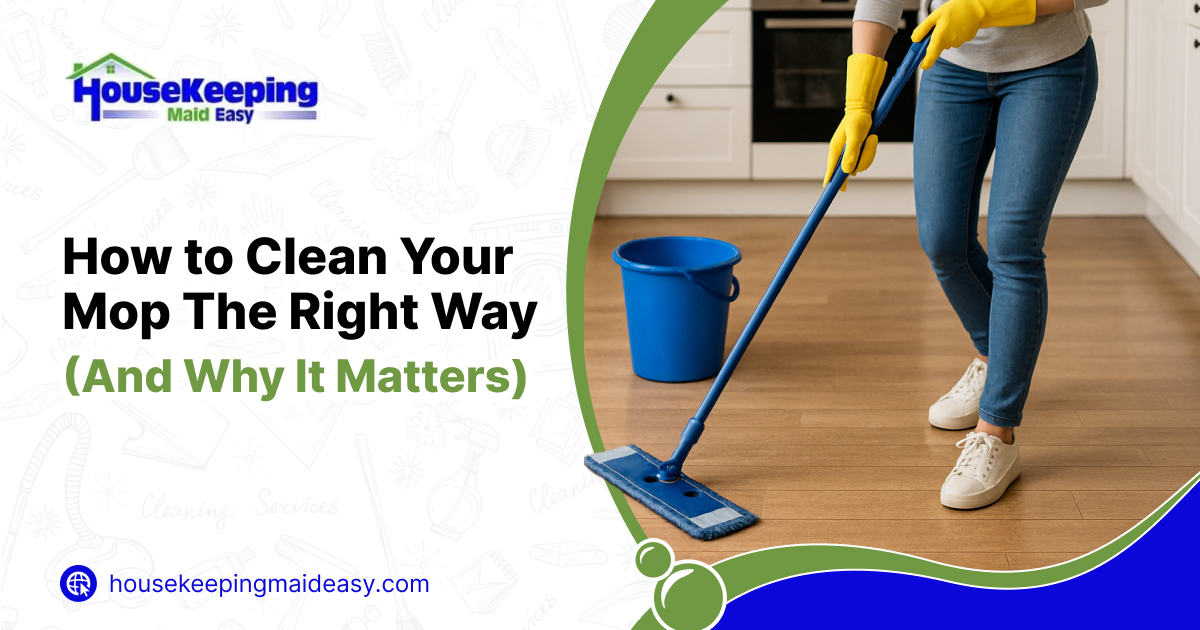
If your mop is starting to look (and smell) a little too worn out, chances are it's doing more harm than good when you're trying to clean your home. Not only will a dirty mop leave your floors with streaks, but it will also spread bacteria, funky odors, and dirt onto your floors. But the good news? Mop cleaning is simple, quick, and has a gigantic impact.
Let's go over how you are supposed to clean your mop properly, what you need, and how you maintain different kinds of mops so your floors stay truly clean.
Every time you mop, you're picking up dust, grease, bacteria, and whatever else is lingering on your floors. Unless you wash the mop itself, all of that yuck stays—and gets sprayed right back out again the next time you mop. A clean mop = cleaner floors, fresher air, and fewer germs.
Before you begin, choose the right cleaning solution. Experiment with these three tried-and-true options:
Excellent for maintenance. Dish soap breaks down grease, breaks down residue, and deodorizes your mop.
Specifically designed for mop head cleaning. Ideal for heavy-duty use and gentle on most mop materials—if you have the right one.
Bleach is a great disinfectant and odor/stain killer. Still, it ruins fluffy mop fibers such as microfiber, so use it sparingly and never combine it with other cleaners such as vinegar or ammonia (that combination produces toxic fumes!).
Start by washing the mop head with warm water to remove loose dirt and dust. Squeeze out under running water until the water is relatively clear.
Fill a bucket with a gallon of warm water and add a few drops of dish soap. Stir it well to create a cleaning solution.
Soak the mop in the solution and let it soak for 20–30 minutes. This loosens buildup and removes odors.
Scrub the mop head lightly with your hands or a brush, focusing on heavily dirty areas.
Rinse the mop under clean, running water until the soap is totally gone.
Let the mop head air dry thoroughly by hanging it in a ventilated area. Don't just dump it in a closed environment—it'll grow mold quickly!
All mop heads are different. The following is how to clean yours, depending on its material:
Soak in warm, soapy water and rinse thoroughly after every use. Clean often to avoid musty odors.
These are machine washable! Just don't use fabric softener (clogs the fibers) and air dry them to keep them from losing their shape.
Rinse thoroughly after every use and soak in soapy water weekly. Replace the sponge often to avoid bacterial growth.
Most are machine-washable. Always read the instructions provided by the manufacturer and dry out before next use.
After mopping your floors, don't forget to clean your mop right away. Here's a quick post-mop routine:
This simple habit keeps your mop cleaner longer and prevents unwanted smells.
If you're tired of mopping in general, we get it. Why not treat yourself to a break and let us do the work instead? We handle all the little things—from dirty mop heads to squeaky clean floors—so you don't have to lift a finger. And if you're carpets are in need, our Indianapolis-area carpet cleaners can breathe new live into them.
Book your cleaning today and enjoy the benefit of a cleaner, healthier house!